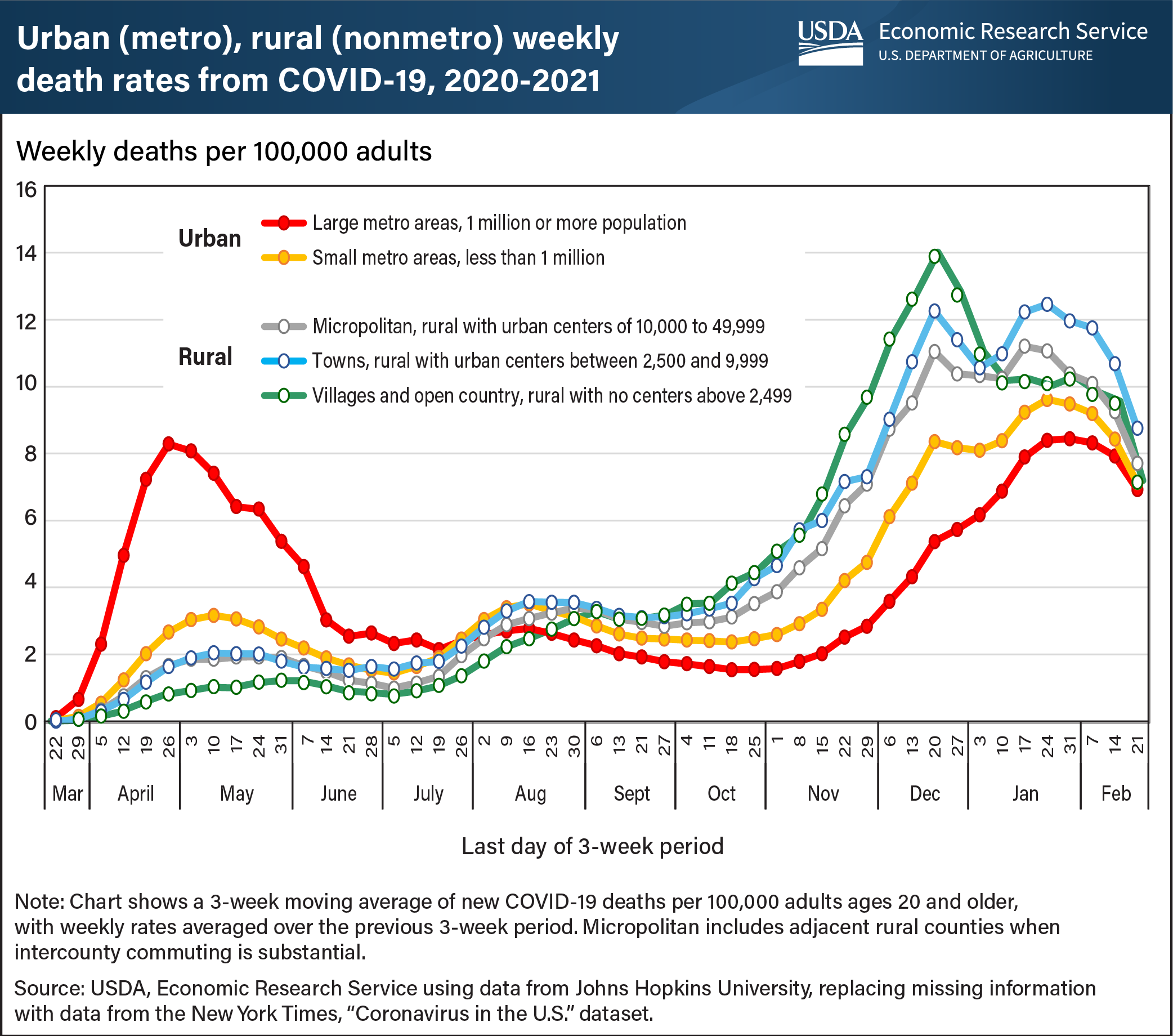Rural death rates from COVID-19 surpassed urban death rates in early September 2020
- by Elizabeth A. Dobis and David McGranahan
- 3/19/2021

During the initial COVID-19 surge between March and June 2020, large urban areas had the highest weekly death rates from the virus in the United States. Those numbers declined as medical professionals learned more about the virus, how to treat it, and how to prevent its spread. As the virus spread from major urban areas to rural areas, the second COVID-19 surge, from July to August 2020, brought more deaths to rural areas. The peak in deaths associated with this surge was smaller because testing was more widespread, the infected population was younger and less vulnerable, and treatments were more effective. However, in early September 2020, COVID-19 death rates in rural areas surpassed those in urban areas. This trend continued into a third, still ongoing, surge that spiked in rural areas during the holiday season and again shortly thereafter. Rural areas have shown higher death rates per 100,000 adults since September in part because they had higher rates of new infections than urban areas, but that is not the whole story. Rural COVID-19 deaths per 100 new infections 2 weeks prior (to account for the lag between infection and death) were 2.2 in the first 3 weeks of February—35 percent higher than the corresponding urban mortality rate of 1.6 deaths per 100 new infections 2 weeks earlier. The rural population appears to be more vulnerable to serious infection because of the older age of its population, higher rates of underlying medical conditions, lack of health insurance, and greater distance to an intensive care hospital. As of early February, death rates have started decreasing, possibly because of more widespread vaccinations among the most vulnerable populations. This chart updates data found in the February 2021 Amber Waves data feature, “Rural Residents Appear to be More Vulnerable to Serious Infection or Death from COVID-19.”
We’d welcome your feedback!
Would you be willing to answer a few quick questions about your experience?

